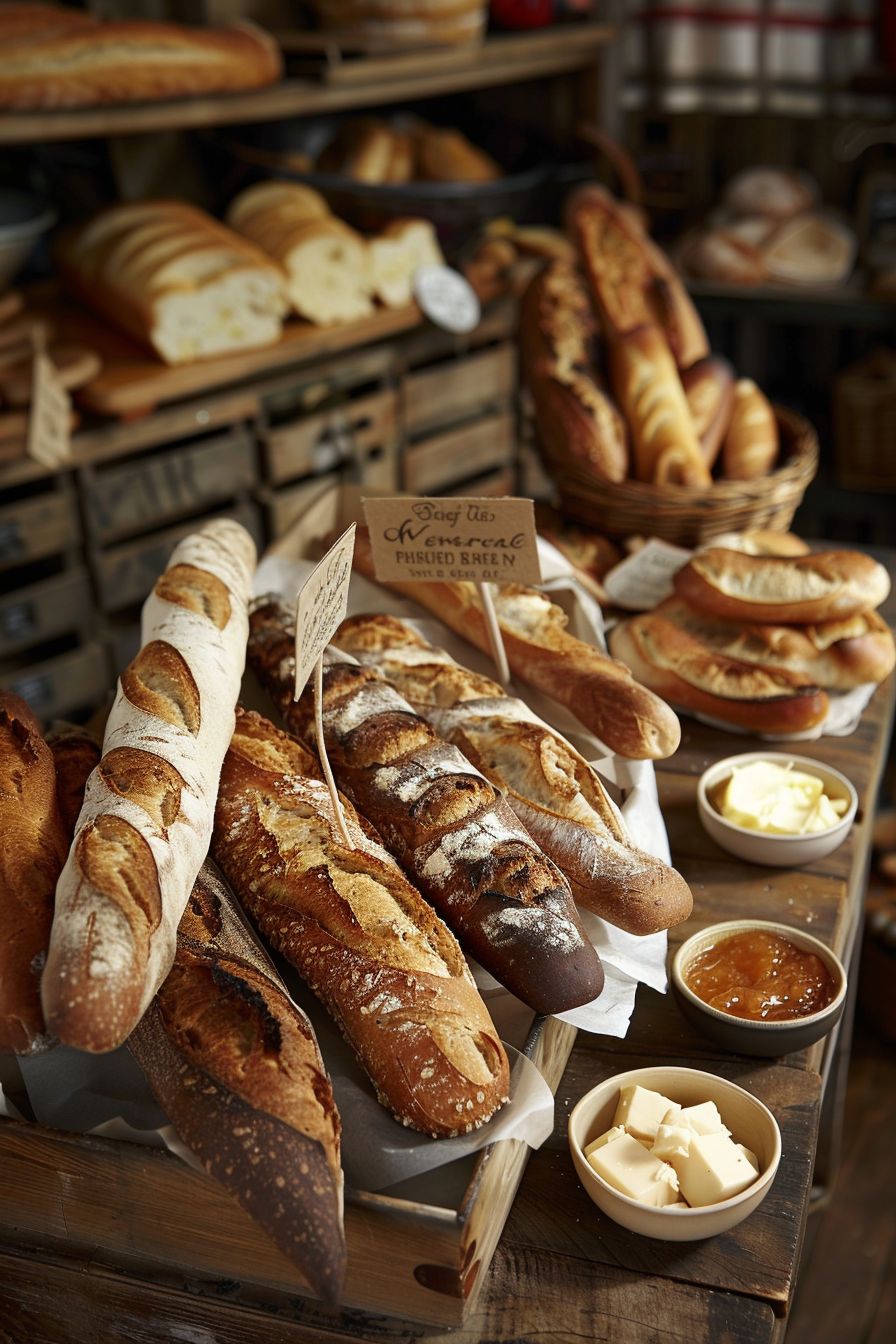6 Main Types of Baguettes Made in France
We may earn a commission through all links on this website. As an Amazon Associate, we earn from qualifying purchases.As a connoisseur of all things French cuisine, one of my greatest passions is exploring the myriad varieties of that most iconic of French breads – the baguette. From the delightfully crusty baguette de tradition to the softly pillowy baguette classique, French bakeries offer a dazzling array of baguettes to suit any taste or meal.
The art of making French baguettes has been inscribed on UNESCO’s Representative List of the Intangible Cultural Heritage of Humanity. Specifically, in late 2021, the “artisanal know-how and culture of baguette bread” was added to the UNESCO list, which recognizes cultural traditions and skills that are important to human communities.
The baguette is an iconic staple food of French life and culture. The crispy, crusty loaf with a chewy interior requires knowledge and skill to make properly. UNESCO recognized not just the bread itself but the entire culture around its production, including the mastery of ingredients, kneading and rolling techniques, as well as the lore of bakeries themselves as centers of social life.
The best baguettes are still made by hand every morning in small independent bakeries using simple ingredients, so adding it to the cultural heritage list aims to protect this craft and tradition for generations to come.
I’m excited to provide my fellow American foodies an insider’s guide to the main types of baguettes found in boulangeries and markets across France. We’ll explore the differences between the crunchy, bready baguette de campagne baked in rural villages and the refined, structured baguette de tradition you’ll find in Parisian bakeries. I’ll highlight classic and creative baguette varieties.

Main Types of Baguettes
Whether you’re planning a trip to France or would like to channel your inner boulanger at home, this overview of authentic French baguette styles will have you feeling like a local as you purchase or bake the perfect baguette! Let’s savor the crusty goodness together.
Classic Baguette (Baguette ordinaire)
The classic baguette, also known as “baguette ordinaire,” is the quintessential French bread known for its elongated shape and crisp crust. Made from basic ingredients such as flour, water, yeast, and salt, this type of baguette boasts a chewy interior with irregular air pockets. Its simplicity and versatility make it a staple in French bakeries and households alike.
Moulded baguette (Baguette moulée)
The moulded baguette, or “baguette moulée,” is shaped using a baguette pan or mould during the proofing process. This technique results in a more uniform shape compared to the traditional hand-shaped baguette. The moulded baguette maintains a consistent thickness and form throughout its length, offering a visually appealing appearance and a slightly denser crumb.
Traditional Baguette (Baguette Tradition)
The traditional baguette, or “baguette Tradition,” adheres strictly to French baking traditions. Crafted with high-quality ingredients and a longer fermentation process, this type of baguette boasts a deep flavor profile and a crispy crust with a chewy, well-developed crumb. The use of traditional methods sets this baguette apart, making it a favorite among purists seeking an authentic French bread experience.
Floured Baguette (Baguette Farinée)
The floured baguette, or “baguette farinée,” is distinguished by the additional flour dusted on its surface before baking. This extra layer of flour enhances the crust’s texture and appearance, contributing to a rustic and slightly crunchy exterior. The interior maintains the classic baguette’s characteristics, providing a delightful contrast between the crisp crust and the soft crumb within.
Baguette en épi
The “baguette en épi” refers to a decorative technique where the baguette dough is cut and shaped to resemble a wheat stalk, similar to an ear of wheat. By making diagonal cuts along the dough and then overlapping the segments, bakers create a stunning visual presentation resembling a wheat sheaf. This type of baguette not only showcases baking craftsmanship but also offers a unique serving aesthetic.
Half Baguette (Demi-Baguette)
The demi-baguette, or half baguette, is precisely what its name implies—a smaller version of the classic elongated baguette. Ideal for individual servings or smaller households, the demi-baguette retains the same characteristics as its full-sized counterpart, featuring a crispy crust and a soft interior. Its smaller size makes it a convenient option for those seeking a smaller portion of the beloved French bread.
Foods that Look Like Baguettes But Are Not
While the baguette holds an iconic status in the realm of bread, other bread-like foods might share a resemblance but have their own unique features and flavors. It’s easy to mistake these for baguettes at first glance, but a closer look reveals their identities and taste profiles. Don’t mistake these foods that are similar to baguettes– but aren’t!
Ficelle
Often mistaken for a slender version of a baguette, the ficelle is a French bread similar in appearance but differs in size and texture. Literally translating to “string” in French, the ficelle is thinner and shorter than a traditional baguette. Despite its diminutive size, this bread maintains a crisp crust and a delicate crumb, making it a perfect accompaniment to various spreads or as a base for sandwiches.
Flûte
The flûte is another bread often confused with the baguette due to its elongated shape. However, unlike the baguette, the flûte tends to be thicker and shorter. Its shorter length and larger diameter provide a chewier texture compared to the classic baguette. The flûte’s size makes it a versatile choice for sandwiches or for tearing and dipping into soups or sauces.
